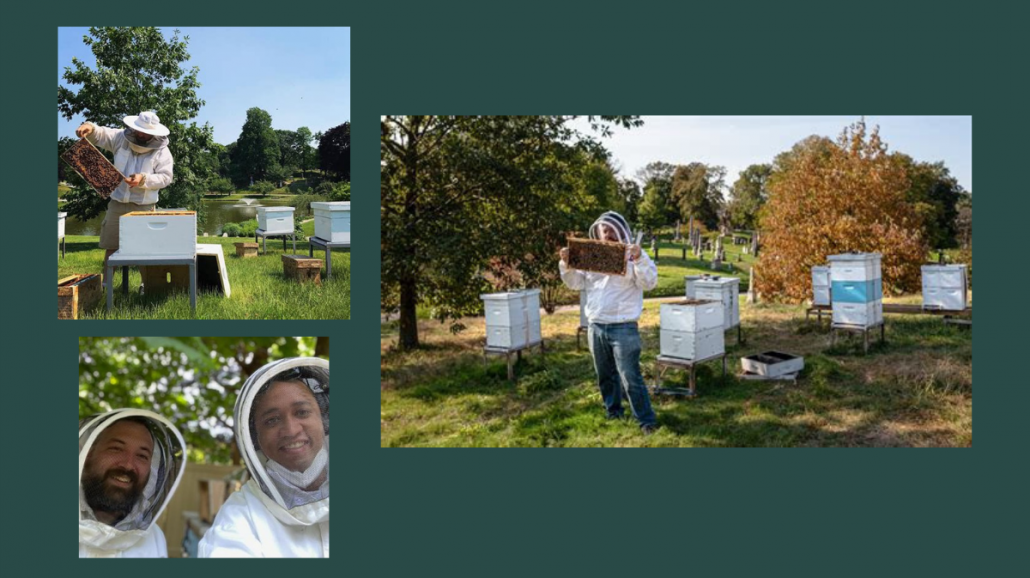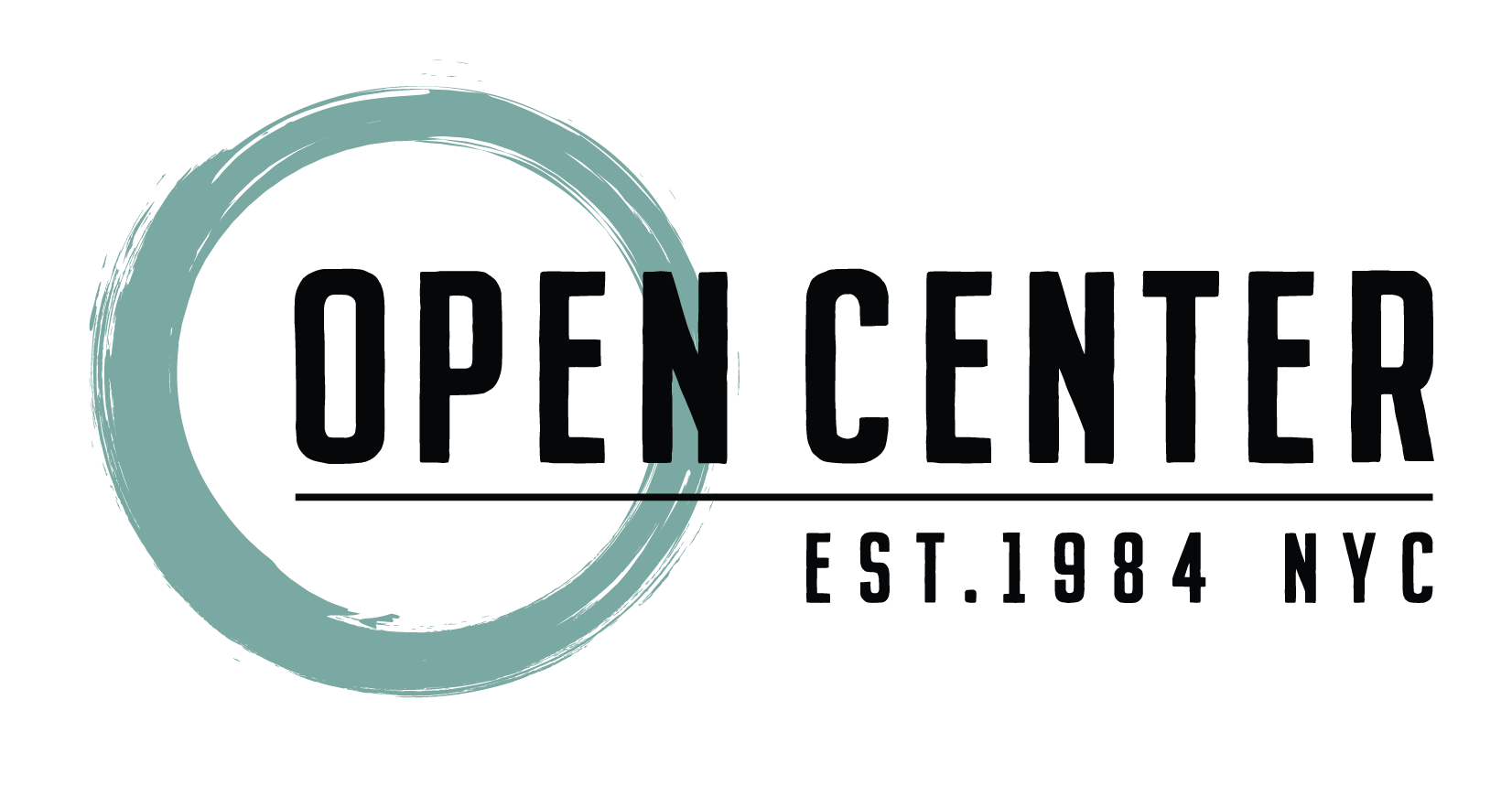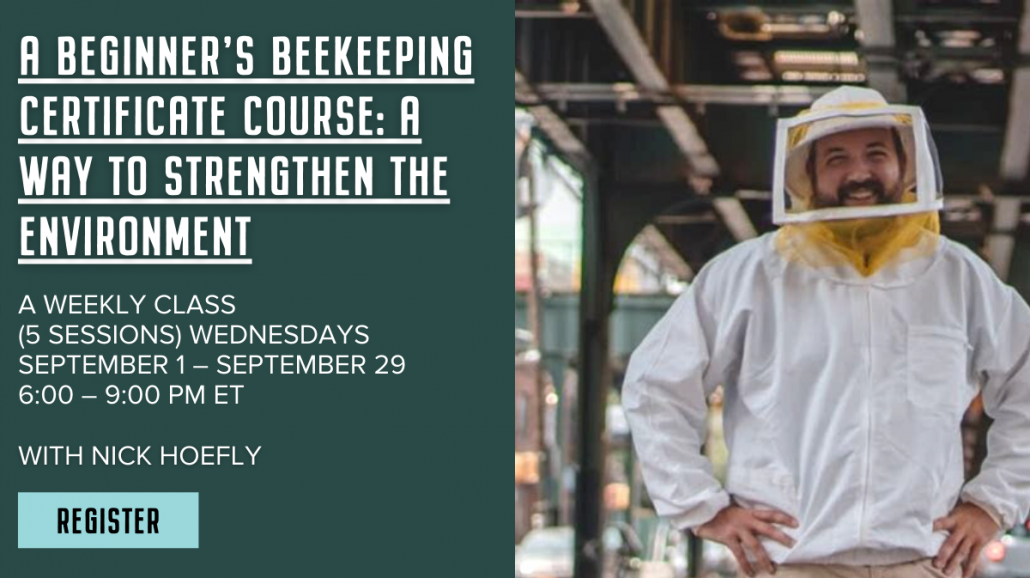Your Beekeeping Questions Answered...

As a result, urban beekeepers are not only helping to combat the declining bee populations, they are helping boost local agriculture and provide a sustainable source for economic growth.
We asked Nick Hoefly, Urban Beekeeper and instructor of the upcoming Beginner’s Beekeeping Certificate course, to provide our budding urban apiarists some information on frequently asked questions.
How much space do you need?
A space as small as 4’x8′ can support two hives comfortably.
When will I see my first batch of honey and how often will I be able to get honey from my bees?
You will generally see a little bit of honey in your first season, but your first full harvest will come in your second season. How often is dependent on the seasonality and flora in your location. Harvesting can range from one time per year in cooler climates to three or more times per year in warmer climates.
What type of financial investment will I need to make for any necessary equipment?
Beekeeping does have a steep initial investment, but becomes incredibly affordable if you commit to keeping bees for multiple seasons. Many things are one-time or occasional investments.
What happens when I go out of town; do I need a bee babysitter?
It depends. For up to a 2-week vacation your bees will generally be fine. Longer than 2 weeks and you may need to have someone who can check in on them. With the right preparation, your hive(s) can go for up to a month with little or no inspection.
FREE INTRODUCTORY CLASS
Monday, August 30, 6:00 pm ET
REGISTER HERE
Check out the video from our visit with Nick Hoefly & The Bees from Astor Apiaries in Queens.
More from the blog
A Special Thanks To Our Teachers
June 1, 2022/by Laurie JordanA Letter From Our CEO, Ross Guttler
May 25, 2022/by Laurie JordanShining the Spotlight on our Advanced Trainings
January 25, 2022/by Laurie JordanOpening Doors Episode 6: A Symphony of Breathwork Techniques with Roger Jahnke
January 25, 2022/by Laurie JordanRobert Bly (1926 – 2021): An Appreciation
December 10, 2021/by Laurie JordanMeet the Teacher: Faith Adiele
December 6, 2021/by Laurie JordanTracking Wonder – Book Excerpt
November 4, 2021/by Lesley RodriguezMeet the Teacher: Sister Kate
November 3, 2021/by Lesley RodriguezCelebrate Native American Heritage Month
October 29, 2021/by Lesley RodriguezReiki – Frequently Asked Questions
October 28, 2021/by Lesley RodriguezMeet the Teacher: Peeka Trenkle
October 9, 2021/by Lesley RodriguezMeet the Teacher: Felicia Cocotzin Ruiz
October 8, 2021/by Lesley RodriguezGET ON THE LIST
Subscribe to our newsletter to keep up with the latest news and program updates from The Open Center.



